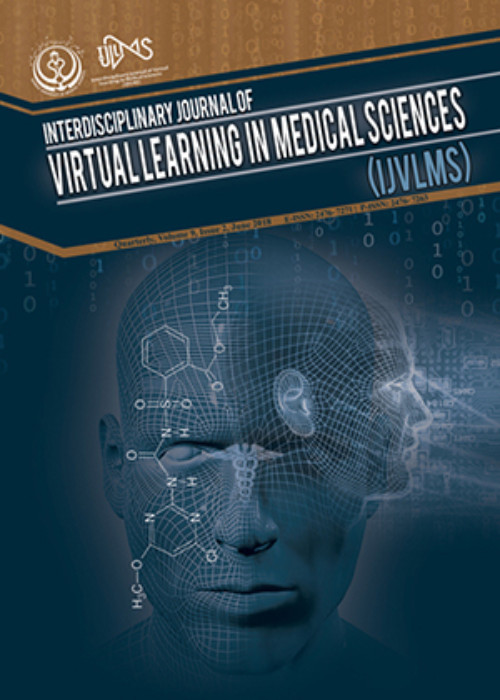Comparing the fluidity, recall power, achievement motivation and educational attainment of students in smart and ordinary schools in physics 1
Author(s):
Abstract:
Introduction
Nowadays, educational systems need schools that provide continuous learning and new opportunities for people to experience life in the information society by using information and communications technology. This study aimed to compare the fluidity, recalling power, educational attainment motivation and educational attainment of students in smart and ordinary schools in physics 1.Methods
This was a causal-comparative study, the subjects of which included 56 high school boys of Arak District 2. Abedi creativity test, Herman educational attainment test and a researcher-made test were used to assess groups. Face validity of tests was confirmed by 5 experts in physics and 5 in education and training field. To assess the reliability exam fluidity, the correlation coefficient (0.95) was used. Two methods were used to test the reliability of the achievement motivation test including Cronbach's alpha (0.87) and split-half. In split-half method, the Spearman-Brown correlation coefficient formula (0.72) was used. Test-retest method was used to determine the reliability of the tests. The correlation coefficient between the results obtained from two tests was 0.96. Data were analyzed using SPSS statistical software version 20 and descriptive statistics, two-sample t-parametric tests at 95%.Results
Findings showed that there is a significant difference between the mean scores of the fluidity of the experimental group (38.14) and the control group (41.71) (P= 0.027). Moreover, there was a significant difference between the mean recalling scores of the experimental group (4.42) and the control group (5.80) (P= 0.002). However, there was no significant difference between the mean scores on educational attainment in experimental group (39.18) and control group (41) (P=0.09). Furthermore, no significant difference was observed between the mean score of educational attainment (12.23) and the control group (13.25) (P=0.395).Conclusion
Creativity, recalling power of students in traditional classroom physics 1 was more than the smart classroom at the end of the school year. Moreover, there was no significant difference between the two classes regarding the educational attainment and the achievement motivation.Keywords:
Language:
English
Published:
Interdisciplinary Journal of Virtual Learning in Medical Sciences, Volume:7 Issue: 1, Spring 2016
Pages:
11 to 22
magiran.com/p1528848
دانلود و مطالعه متن این مقاله با یکی از روشهای زیر امکان پذیر است:
اشتراک شخصی
با عضویت و پرداخت آنلاین حق اشتراک یکساله به مبلغ 1,390,000ريال میتوانید 70 عنوان مطلب دانلود کنید!
اشتراک سازمانی
به کتابخانه دانشگاه یا محل کار خود پیشنهاد کنید تا اشتراک سازمانی این پایگاه را برای دسترسی نامحدود همه کاربران به متن مطالب تهیه نمایند!
توجه!
- حق عضویت دریافتی صرف حمایت از نشریات عضو و نگهداری، تکمیل و توسعه مگیران میشود.
- پرداخت حق اشتراک و دانلود مقالات اجازه بازنشر آن در سایر رسانههای چاپی و دیجیتال را به کاربر نمیدهد.
In order to view content subscription is required
Personal subscription
Subscribe magiran.com for 70 € euros via PayPal and download 70 articles during a year.
Organization subscription
Please contact us to subscribe your university or library for unlimited access!


